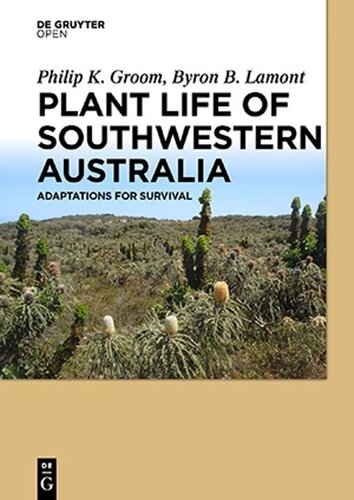

Most ebook files are in PDF format, so you can easily read them using various software such as Foxit Reader or directly on the Google Chrome browser.
Some ebook files are released by publishers in other formats such as .awz, .mobi, .epub, .fb2, etc. You may need to install specific software to read these formats on mobile/PC, such as Calibre.
Please read the tutorial at this link: https://ebookbell.com/faq
We offer FREE conversion to the popular formats you request; however, this may take some time. Therefore, right after payment, please email us, and we will try to provide the service as quickly as possible.
For some exceptional file formats or broken links (if any), please refrain from opening any disputes. Instead, email us first, and we will try to assist within a maximum of 6 hours.
EbookBell Team

4.3
28 reviewsThe southwestern Australian flora is unique in the world, not only for its biodiversity and endemism, but also for its functional biodiversity. It also contains the world’s most nutrient-impoverished soils, has a prolonged-summer period and the vegetation is extremely fire-prone. These conditions have engendered an array of survival adaptations that have evolved in these harsh conditions across a diverse range of species. It is well recognised that the southwest flora has the toughest and most spiny vegetation of the world, the greatest number of species that store their seeds in woody fruits, and the most specialised means of obtaining limited soil nutrients and water.
This book focuses on the survival mechanisms, adaptations and ecology of the unique Southwest Australian flora (restricted here to flowering plants). The book begins with an examination of how the flora has evolved into the present forms. It describes further in detail the adaptive responses of the flora to the main environmental pressures influencing survival - fire, summer drought, nutrient-impoverished soils, pollination and seed dispersal agents. Specialised responses to obtain essential nutrients are presented in three chapters – carnivorous plants, parasitic plants and specialised roots. An entire chapter is devoted to leaves, with an insight into how leaves may assist in protecting flowers and fruits from herbivores and seed-eaters. The book provides an ecological perspective on how the flora has evolved complex strategies to ensure species survival in the relatively harsh seasonal climate of a Mediterranean-type ecosystem.
Survival Strategies, Mediterranean-Type Climate, Plant Biodiversity